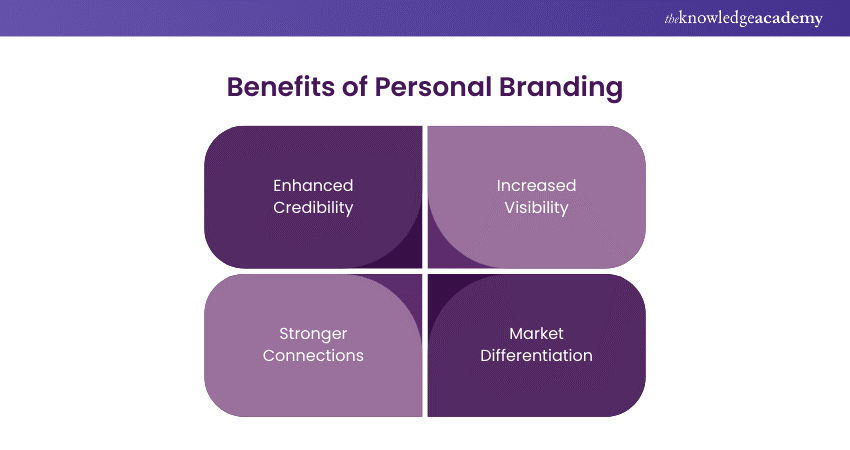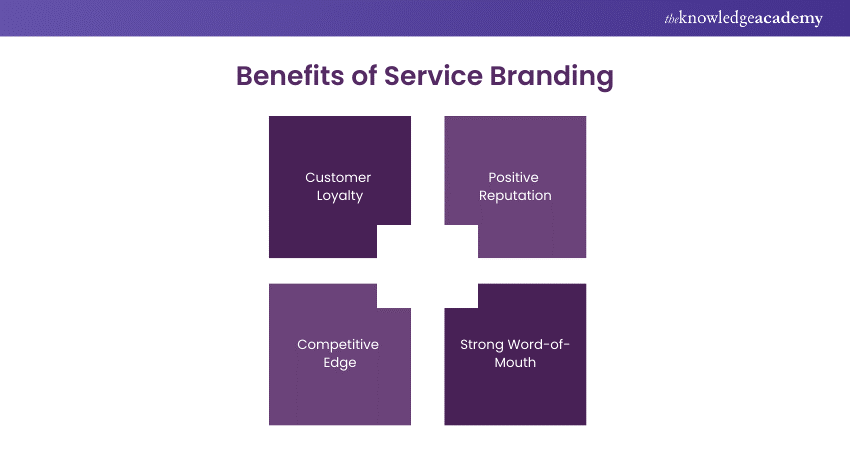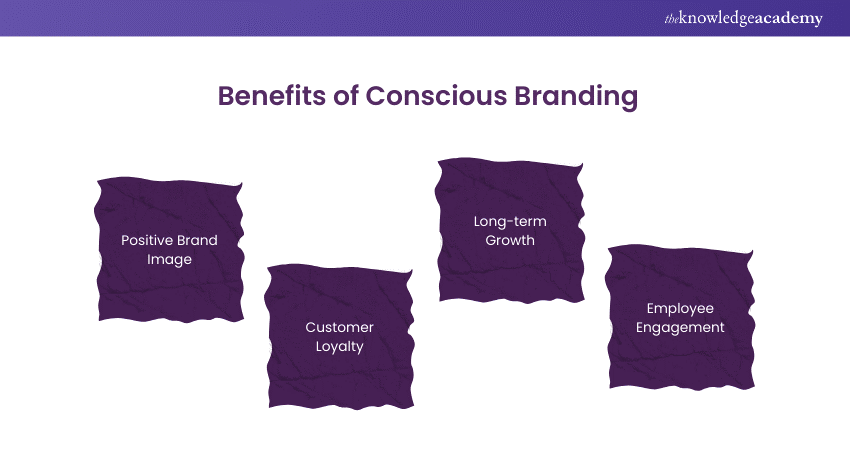We may not have the course you’re looking for. If you enquire or give us a call on +33 805638382 and speak to our training experts, we may still be able to help with your training requirements.
We ensure quality, budget-alignment, and timely delivery by our expert instructors.

Imagine you're walking through a store surrounded by countless products. What makes you reach for one over another? It's not just the packaging—it's the brand behind it. Branding is a marketing tactic that turns a product or service into something memorable and trusted. Now, think about understanding the different Types of Branding and how they can help you craft a brand that stands out and connects with people.
In this blog, we discuss these branding strategies, showing you how to create a brand identity that leaves a lasting impression. So, let's get started!
Table of Contents
1) What is a Brand?
2) Branding Types
a) Personal Branding
b) Retail Branding
c) Product Branding
d) Service Branding
e) Corporate Branding
f) Cultural and Geographic Branding
g) Online Branding
h) Offline Branding
i) Conscious Branding
j) Co-branding
3) Conclusion
What is a Brand?
A brand is more than just a logo or name. It’s the identity of a product, service, person, or company, including its values and mission, which make it unique. A brand is how people see and feel about it, including customers and the public.
The brand experience comes from how people interact with it, the quality of what it offers, and its reputation. Good branding leaves a strong impression, builds loyalty, and keeps people coming back.

Branding Types
Here are some of the most common Types of Branding:
1) Personal Branding
Personal branding revolves around creating and maintaining a public image for an individual. This type of branding is essential for professionals, entrepreneurs, influencers, and public figures who want to distinguish themselves in their respective fields.

Personal branding involves showcasing unique skills, personality traits, and expertise to build a reputation and gain trust. Social media platforms like LinkedIn, Twitter, and Instagram are often used to cultivate and manage personal brands.
For example, a motivational speaker may use personal branding to showcase their expertise in personal development, share success stories, and engage with followers to cultivate a community of like-minded individuals. The aim is to craft a recognizable and relatable identity that resonates with the target audience. To help in shaping this, reviewing Personal Brand Statement Examples can provide valuable insights and inspiration for crafting a strong personal brand.
2) Retail Branding
Retail branding focuses on creating a strong identity for retail stores or chains. It involves designing the store's ambience, customer service, product offerings, and marketing strategies to create a memorable shopping experience. Retail branding is about making the store itself a brand that customers associate with quality, value, and a specific shopping experience.
For instance, Apple Stores are known for their sleek, minimalist design, knowledgeable staff, and interactive product displays. This consistent branding across all Apple Stores worldwide ensures that customers have a uniform and positive experience, reinforcing the brand’s image of innovation and quality.
Learn to build your personal brand campaign with our Personal Branding Course – Join today!
3) Product Branding
Product branding is the process of giving a unique identity to a product to distinguish it from competitors. This involves designing a logo, packaging, and marketing strategies that highlight the product’s benefits and features. Product branding is crucial in crowded markets where multiple products may offer similar functionalities.
A well-known example of product branding is Coca-Cola. The distinctive red colour, cursive logo, and consistent messaging around happiness and refreshment have made Coca-Cola a globally recognised brand. The product branding strategy has helped Coca-Cola maintain its market leadership despite numerous competitors.
4) Service Branding
Service branding is similar to product branding, but it focuses on services rather than physical products. This type of branding emphasises the quality of service, customer satisfaction, and the overall experience. Since services are intangible, service branding relies heavily on customer perception and word-of-mouth recommendations.

A prime example of service branding is that of Ritz-Carlton hotels. The brand is synonymous with luxury and exceptional customer service. Ritz-Carlton has built its brand around the promise of delivering personalised, high-quality service. It is a preferred choice for customers seeking premium hospitality experiences.
5) Corporate Branding
Corporate branding involves creating a strong identity for an entire company or organisation rather than focusing on individual products or services. This type of branding is crucial for building trust, attracting investors, and establishing a strong market position.
Corporate branding reflects the company’s values, mission, and culture, and it plays a significant role in how the company is perceived by the public, employees, and stakeholders.
One of the most successful examples of corporate branding is that of Google. Known for its innovation, employee-friendly culture, and cutting-edge technology, Google has established itself as a leading global brand. The company’s corporate branding is evident in its commitment to innovation, diversity, and sustainability, making it a trusted and admired brand worldwide.
6) Cultural and Geographic Branding
Cultural and geographic branding focuses on promoting a specific culture, region, or country as a brand. This type of branding is often used by countries, cities, or regions to attract tourism, investment, and talent. Cultural and geographic branding emphasises the unique characteristics, traditions, and attractions of a place.
An example of geographic branding is “Incredible India,” a campaign launched by the Indian government to promote tourism. The campaign highlights India’s rich cultural heritage, diverse landscapes, and vibrant traditions, positioning the country as a must-visit destination for travellers.
7) Online Branding
Online branding, also known as digital branding, involves creating a strong presence on the internet. This type of branding is essential in today’s digital age, where consumers frequently search for products, services, and information online.
Online branding covers a company’s website, social media profiles, online advertisements, and digital content. The goal is to create a consistent and engaging online identity that attracts and retains customers.
For example, Nike’s online branding strategy includes a user-friendly website, an active social media presence, and engaging digital content, such as videos and blogs. Nike’s online branding reinforces its image as a leading sportswear brand and connects with its audience through inspirational and motivational messaging.
8) Offline Branding
Offline branding refers to traditional methods of branding that do not involve the internet. This includes print advertisements, billboards, TV commercials, radio ads, and events. Offline branding is still relevant today, especially for reaching audiences that may not be as active online. Consistent offline branding helps build brand recognition and reinforces the brand’s identity in the minds of consumers.
For instance, McDonald’s uses offline branding through its iconic golden arches logo, catchy jingles, and extensive use of outdoor advertising. These offline branding efforts complement the company’s online presence, ensuring a cohesive brand experience across all channels.
9) Conscious Branding
Conscious branding, also known as ethical branding, is a strategy where companies focus on promoting ethical practices, sustainability, and social responsibility. This type of branding appeals to consumers who prioritise ethical values and are more likely to support brands that align with their beliefs. Conscious branding involves transparent communication about the company’s efforts to make a positive impact on society and the environment.

Patagonia is a leading example of conscious branding. The outdoor clothing brand is known for its commitment to environmental sustainability, ethical sourcing, and social responsibility. Patagonia’s conscious branding has attracted a loyal customer base that values the company’s dedication to making a positive difference in the world.
10) Co-branding
Co-branding is a strategic partnership between two or more brands to create a product or service that leverages the strengths of each brand. This type of branding allows companies to tap into each other’s customer bases and enhance their market reach. Co-branding can result in innovative products and services that offer added value to consumers.
An example of successful co-branding is the collaboration between Nike and Apple. The two brands partnered to create the Nike+ product line, which includes fitness-tracking technology integrated with Nike’s sportswear. This co-branding effort combined Nike’s expertise in sportswear with Apple’s technological innovation, creating a product that appeals to fitness enthusiasts and tech-savvy consumers.
Learn essential marketing techniques with our Introduction to Marketing Training – Join today!
Conclusion
Branding plays a key role in shaping the identity and success of individuals, companies, products, and services. Understanding the different Types of Branding can help entities strategically position themselves in the market, build brand trust, and foster loyalty among their audience. By leveraging the right type of branding, entities can create a lasting impression, differentiate themselves from competitors, and achieve long-term success.
Learn how to develop a brand strategy with our Business Branding Course – Join today!
Frequently Asked Questions
What is the Common Method of Branding?

The most common method of branding is product branding, where a unique identity is created for a product through logos, packaging, and marketing strategies to differentiate it from competitors.
What are the 4 Levels of Branding?

The four levels of branding are corporate branding (the overall identity of the company), product branding (individual product identity), personal branding (individuals promoting themselves), and geographic branding (branding a location or region).
What are the Other Resources and Offers Provided by The Knowledge Academy?

The Knowledge Academy takes global learning to new heights, offering over 30,000 online courses across 490+ locations in 220 countries. This expansive reach ensures accessibility and convenience for learners worldwide.
Alongside our diverse Online Course Catalogue, encompassing 19 major categories, we go the extra mile by providing a plethora of free educational Online Resources like News updates, Blogs, videos, webinars, and interview questions. Tailoring learning experiences further, professionals can maximise value with customisable Course Bundles of TKA.
What is The Knowledge Pass, and How Does it Work?

The Knowledge Academy’s Knowledge Pass, a prepaid voucher, adds another layer of flexibility, allowing course bookings over a 12-month period. Join us on a journey where education knows no bounds.
What are Related Courses and Blogs Provided by The Knowledge Academy?

The Knowledge Academy offers various Digital Marketing Courses, including the Business Branding Course, Customer Retention Training, and Personal Branding Course. These courses cater to different skill levels, providing comprehensive insights into Campaign Optimisation.
Our Digital Marketing Blogs cover a range of topics related to Branding, offering valuable resources, best practices, and industry insights. Whether you are a beginner or looking to advance your branding strategy skills, The Knowledge Academy's diverse courses and informative blogs have got you covered.
Upcoming Digital Marketing Resources Batches & Dates
Date
 Business Branding Course
Business Branding Course
Fri 13th Jun 2025
Fri 15th Aug 2025
Fri 10th Oct 2025
Fri 12th Dec 2025






 Top Rated Course
Top Rated Course


 If you wish to make any changes to your course, please
If you wish to make any changes to your course, please


